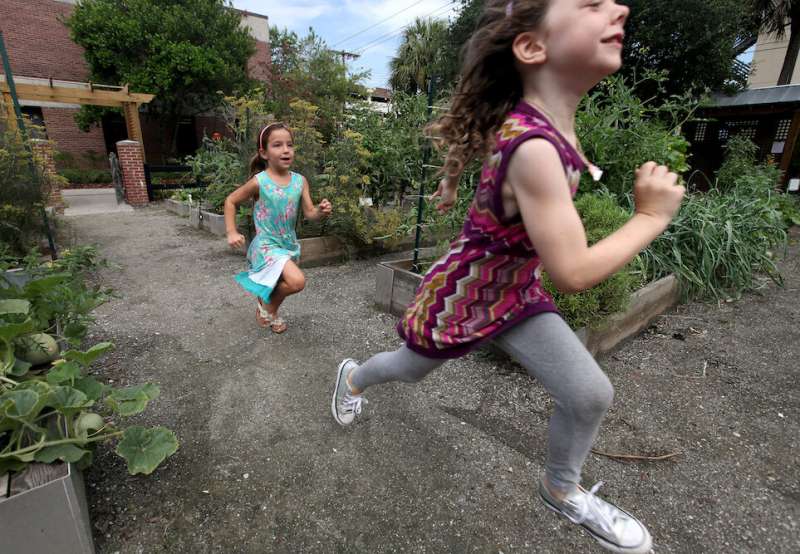
Medical University of South Carolina researchers describe the development of a school-based wellness initiative for combating childhood obesity by the MUSC Boeing Center for Children’s Wellness (BCCW) in the November issue of the Journal of School Health. Launched in 2007, the program is now available in 200 schools in 20 school districts across South Carolina, thanks to its flexible implementation model. Schools select from a menu of intervention options to tailor a wellness approach that is right for them.
It was South Carolina’s ranking in 2005 as eighth worst in the nation for childhood obesity that brought the urgency of the problem into focus and galvanized action around the issue, said BCCW director Janice Key, M.D., lead author of the article.
According to Key, it became clear early on that schools were the setting where obesity could best be addressed.
“Children are there for a large part of each day, and so they eat there, and they have an opportunity for exercise while they’re in school,” said Key. “It’s particularly important for anything to do with healthy lifestyles to include schools.”
For those reasons, the state mandated school health advisory councils to oversee wellness policy and initiatives at the school district level. However, most of those initiatives were never implemented by schools.
The problem was not a lack of evidence-based strategies to reduce obesity and improve wellness. Over the years, many strategies had been tested in small studies and recommended by public health authorities. The challenge was getting schools to implement them.
“Unfortunately, the recommendations would be published and sit on a shelf somewhere and never be implemented,” said Key. “There was a disconnect between all of these proven things and what was being done out in the real world.”
To address that disconnect, the BCCW shifted its focus in 2011 from direct provision of wellness interventions to an implementation strategy that encouraged schools to take more ownership.
The BCCW team consulted with Cathy Melvin, Ph.D., an implementation scientist who is now director of the Community Engagement Core, which supports the Community-Engaged Scholars Program (CES-P) at the South Carolina Clinical & Translational Research (SCTR) Institute. As an implementation scientist, she studies ways to get evidence-based strategies into the real world. Key and Melvin have spent the ensuing decade perfecting the implementation model for the program.
“Dr. Key and I agreed to use the RE-AIM (Reach, Effectiveness, Adoption, Implementation, and Maintenance) model as the guiding framework for measuring the implementation of BCCW program,” said Melvin, who is senior author of the article. “RE-AIM allows us to focus on understanding how to prompt “real world” change at both the individual and organizational levels in our state’s schools.”
All of the participating schools now have their own wellness committees, most of which include a health care professional. Key and her team found that including health professionals leads to schools implementing 25% more wellness initiatives. These committees take ownership of wellness initiatives, choosing those best suited for their schools from a menu of evidence-based options on a school wellness checklist. These can include changes to policy, such as choosing an exercise-based instead of food-based reward; changes to systems, such as having health professionals on the school wellness committee; and changes to the environment, such as removing vending machines selling sugary drinks. In addition to students, teachers and staff are also invited to participate in the wellness initiatives.
“The staff and the teachers are all excited about it and getting healthier,” said Key. “I love the fact that it’s truly a culture change.”
Schools are awarded points based on the number, impact and difficulty of the interventions they institute. They compete with other schools to see which can get the most points. Winners are awarded funds that can be used for a future wellness intervention of their choice.
Also important to achieving buy-in from school administrators was identifying metrics of success that would be meaningful for them. To find out which measures would resonate with them, in 2013, Key partnered with Robert Stevens, Ph.D., then of the Charleston County School District, on a research study funded by SCTR’s CES-P.
Key credits this collaboration with Stevens as being crucial to the success of the program. Stevens continues to work with SCTR as a member of both the CES-P review team and the SCTR Translational Research Community Advisory Board.
Recent research shows that school administrators are interested not only in health but also in educational outcomes, such as graduation rates. According to the program’s 2020 impact statement, obesity among fifth-graders in Charleston County schools has decreased by 38% since 2008. Educational outcomes have also improved: Attendance is higher, and suspension and expulsion are lower in schools that have participated longer. For every four years of participation, attendance rates increased by a half percent. That translates to an additional 33 student days for a school with a student body of 200. For every 50 points a school achieved on the school wellness checklist, graduation rates increased by 1.5%. That would translate to an additional 10 students graduating from a high school with a graduating class of 300.
What story does this data tell?
For Key, that’s easy. “A healthy kid is a better learner,” she said.
Key thinks that the model the BCCW has developed over the years is easy to implement and would like to see it expand to more schools across the state.
Source: Read Full Article
